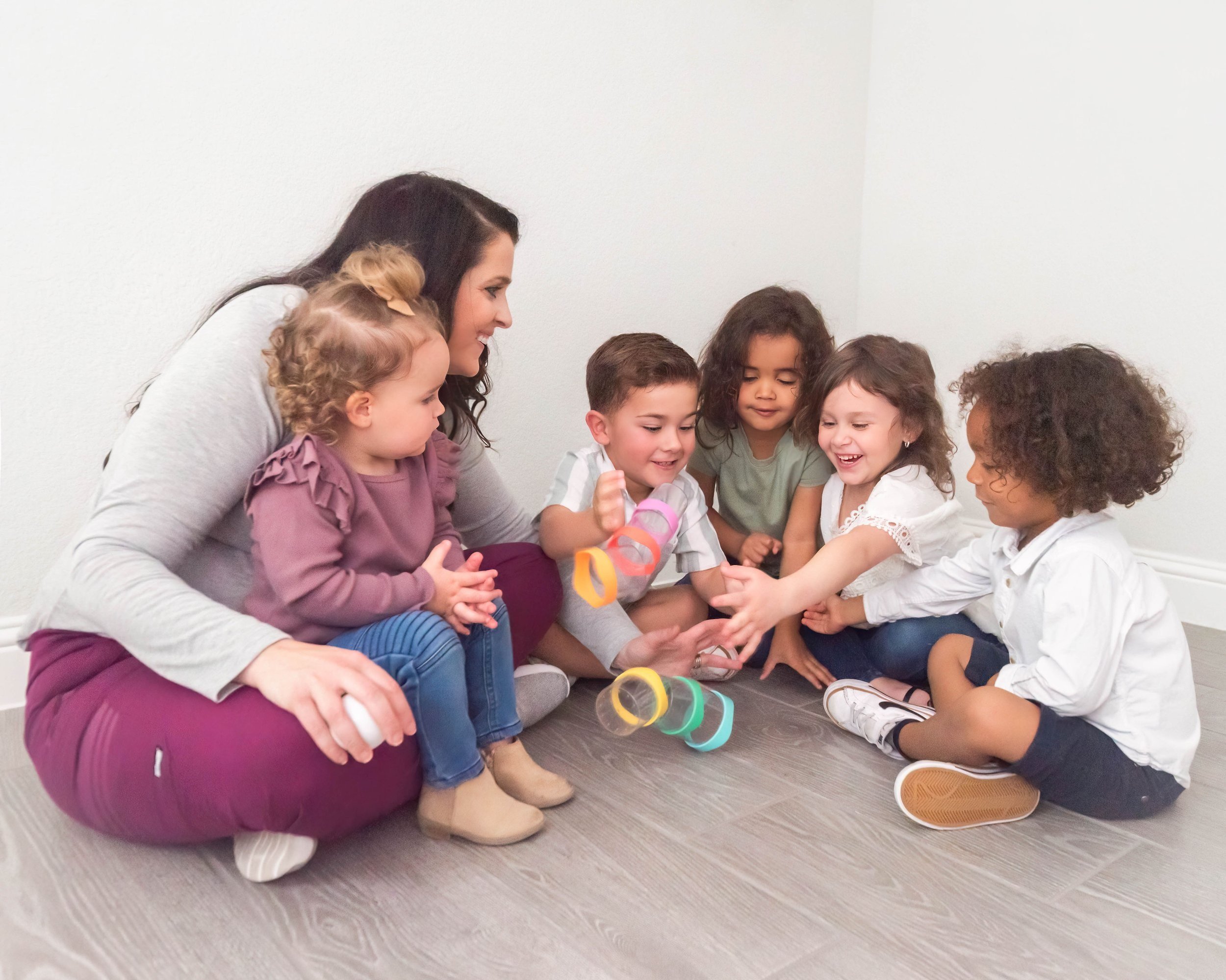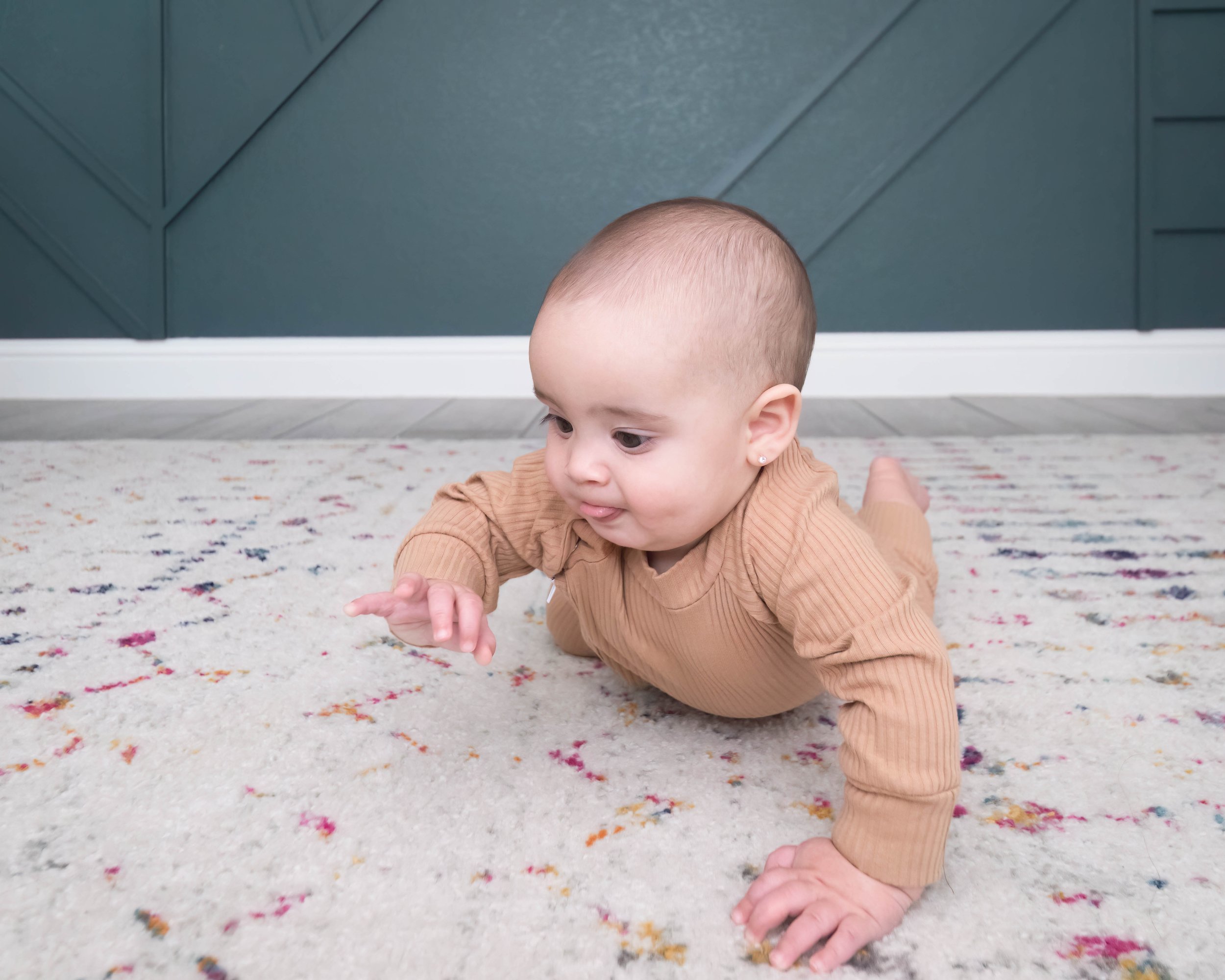
What is DMI Therapy?
Dynamic Movement Intervention
(DMI) is a new and emerging therapeutic technique that stimulates neuroplasticity to help make new and improved connections and develop the child’s motor milestones.
Who could benefit from DMI?
DMI is a good fit for most children and can benefit those that haven’t met many of their milestones. This can include a wide range of delays- those who aren’t rolling yet to kids walking that need help with stairs, more difficult terrain, etc. Regardless of your child’s level of cognition and extent of neurological deficit or damage, affected children benefit from DMI motor intervention because it works to stimulate neuroplasticity in the developing brain.
Children diagnosed with any type of motor delay (big or small) including conditions such as; Down Syndrome, Cerebral palsy, global developmental delay, hypotonia, chromosomal abnormalities/genetic disorders, spinal cord lesions or acquired brain injury may benefit from this form of therapy.
Children with risk factors for delays, such as those who are born prematurely, can also benefit from this therapy. This is due to the strong neuroplastic changes that this treatment stimulates within the developing brain.
FAQ’s
-
DMI Therapy can benefit your child in a variety of ways.
• Gross motor skills: improving gross motor skills of children from birth by developing automatic motor movement. (Promotes Neurological Maturity)
Parent Translation: Gross motor skills involve larger muscle groups. Your child’s gross motor milestones include the ability to hold his/her head up, roll, sit, crawl, walk, run, transition between positions, etc. Once movement becomes automatic, the brain has completely grasped how to repeat that skill smoothly and utilize it in various scenarios. This allows your child to use that skill well every day.
• Gradual progression: continuously increasing the challenge to encourage the child to respond with greater independence.
Parent Translation: Gradual progression means lessening the support your child requires to do an exercise or activity. For example, standing while supporting at your child’s ankles is less support than at their hips. The less support they are given, the more their brain understands that they can do this skill independently.
• Alignment and Postural Control: all exercises focus on optimal anatomical alignment and stimulate postural control and verticality
Parent Translation: Encouraging your child to activate the appropriate muscles to obtain correct alignment and/or posture. For example, sitting up with a straight back vs. sitting with a curved back.
• Range of Motion: muscle and joint range of motion is achieved by movement (Dynamical and functional stretching).
Parent Translation: DMI provides active stretching in order for your child to maintain or gain better range of motion in areas like ankles, calves, hamstrings, etc. This is done through exercises specifically chosen both during sessions and for your child’s home exercise program. Stretching in this way helps lead to longer lasting changes.
• Balance: improved balance is a common thread through most DMI exercises.
• Functional movements: improving actions and skills that lead to attaining milestones such as rolling, sitting, standing, walking
• Somatosensory Development: The strong sensory information provided by the exercises sends afferent messages to the brain to create specialized synapses that fine tune balance and muscle control and movement.
Parent Translation: Balance requires multiple systems to work harmoniously together. Each time your child is presented with an exercise, they are experiencing some or all of those systems at work. When we do exercises, we are sending messages to the brain to activate those systems either through our hands, their response, or both. Over time, this helps the brain make new connections that help your child fine tune their movements and learn to balance in a gravity dependent world. Balance and movement can then continue to improve.
• Modifying tone, primitive reflexes, and abnormal patterns of movement: DMI strives to provide normalized movement patterns to children with neurological dysfunction to assist with the integration of disruptive primitive reflexes.
Parent Translation: Reflexes are a natural part of development. They help our bodies learn new skills and prepare us for certain movements. Then they get integrated, or slip into the background. Children with neurological damage or delays often don’t integrate some reflexes and therefore experience reflexes for too long. DMI can Help your child move with proper alignment, activating the correct muscles, and thereby help with the integration of disruptive primitive reflexes.
• Global Development: DMI focuses on gross motor skills, however many other skills develop as a byproduct of this intensive intervention.
Parent Translation: As your child gets stronger and is able to move easier, it frees up their brain to focus on other areas (i.e. speech, vision, play skills, learning etc.)
-
DMI is a very powerful and dynamic approach. What sets it apart from more traditional methods is that DMI is constantly working on improving brain function and harnessing the power of neuroplasticity. This is accomplished by using exercises that expose children to gravity, provoke the next set of developmental skills and milestones, and the use of distal and decreased support. Seeing a DMI session performed is usually a new and exciting experience for both the child and their parents.
-
After a brief assessment, the therapist will identify areas of deficit, which will guide the treatment. The therapist chooses exercises that will challenge your child’s neurological system to the highest level of skill as well as exercises that develop the core and foundational milestones. Exercises involve movement against gravity, progressively more challenging (distal) support, provocation of desired movements, as well as postural and strength challenges.
During a treatment session, each exercise is repeated around 5 times and the child will complete many different exercises which provide novel and varied sensory and motor challenges. From session to session, exercises may be repeated until the movements become automatic, which results in improved balance and function.
Exercises are conducted on a tabletop or the floor based on the child’s abilities. DMI Therapy works well in conjunction with other therapeutic techniques and therapy equipment. These are often combined in a treatment session to provide better alignment and enhance optimal outcomes.
Have more questions? Check out DMI’s Parent Resource or Contact Tiny Triumphs to get answers.


